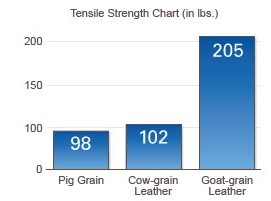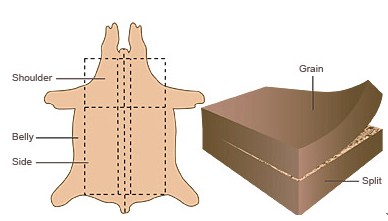Gloves come in many different levels of protection, dexterity, and comfort. You need the right combination of materials and construction for your application. Our glove experts can help you make an informed decision about which combination of materials and construction is right for your application.
Leather is a favourite choice for gloves. It’s tough. It has good abrasion and puncture resistance. It breathes and conforms to the hand with time.
Did you know that different types of leather have their own Pro’s and Con’s?

Cowhide
-
Offers comfort
-
Durability
-
Good abrasion
-
Good heat resistance
Pigskin
-
Offers comfort
-
Breathability
-
Withstands moisture without stiffening
Deerskin
-
Extremely soft and supple
-
Excellent dexterity
Goatskin
-
High natural oil content makes goatskin very soft and pliable
-
Excellent tear resistance even when very thin
Horsehide
-
Tough and durable, yet very comfortable
Sheepskin
-
Used where optimum dexterity and touch sensitivity are needed
Grain vs Split
Grain Leather comes from the smooth external side of the hide. Grain provides durability, dexterity and water and oil repellency. Split Leather is the rougher internal side of the hide. Split Leather is also durable and is more economical.

Cuts of Leather
The location and cut of leather that comes from cowhide makes a big difference, especially with split leather (the internal side of the hide). Side split is the most durable and best quality but also the most expensive. Shoulder split is also quite durable but slightly more economical. Belly split is the most economical and least durable cut.
|

